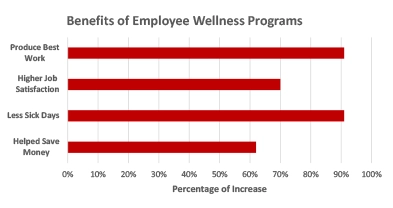White Papers and Press Releases
At Advanced Training Products, we're committed to empowering organizations with the knowledge and tools they need to create safer, healthier workplaces. Our thought leadership resources provide valuable insights into a range of topics, including:
- Total Worker Health® initiatives
- Workplace impairment prevention
- Reasonable suspicion protocols
- Cannabis legalization and its impact on the workplace
Stay informed and stay ahead with our expert analysis and actionable advice.
Keep up with the latest industry news through our press releases below.
Cultivating a Culture of Wellness: Fostering Well-being, Preventing Impairment, and Enhancing Workplace Performance
In today's dynamic workplace, the concept of employee health and well-being has transcended mere physical fitness. A holistic approach to Total Worker Health® (TWH) initiatives encompasses physical, mental, and social well-being, recognizing the interconnectedness of these factors in influencing employee productivity, safety, and overall organizational success. This whitepaper explores strategies for promoting a culture of wellness, highlighting the role of training and documentation in addressing impairment-related issues and fostering a thriving work environment.
Happy, healthy employees are engaged, focused, and collaborative, driving innovation and reducing absenteeism. Invest in flexible work arrangements, physical activity options, and mental health initiatives. It's not just the right thing to do, it's a strategic move that fuels your company's success. Promoting a culture of wellness is an investment in the long-term health, productivity, and success of an organization. By prioritizing employee well-being, implementing effective wellness initiatives, and leveraging training and documentation, organizations can foster a thriving workplace where employees feel valued, supported, and empowered to contribute their best. A commitment to wellness is not just a matter of compliance; it is a strategic imperative for achieving organizational excellence and sustainable growth.
Certain states like New Jersey have established the role of the Workplace Impairment Recognition Expert ("WIRE") to help address these issues. Advanced Training Products offers an innovative solution: WIRE Certified Training™ - Empower your leaders to become well-being champions, equip employees with the tools to prioritize their health, and streamline assessments with an intuitive platform built for transparency. Watch as engagement scales new heights, operational risks dwindle, and your business reaches unprecedented levels of success.
Prioritizing Wellness: A Foundation for a Healthy Workplace
Promoting a culture of wellness is not merely a feel-good initiative; it is a strategic investment in employee well-being, productivity, and organizational success. By prioritizing wellness, organizations can:
- Reduce workplace impairment: Addressing underlying factors that contribute to impairment, such as stress, fatigue, and mental health concerns, can significantly reduce the risk of accidents, injuries, and presenteeism.
- Enhance employee engagement and motivation: A culture of wellness fosters a sense of care and support, boosting employee morale, engagement, and motivation, leading to improved performance and satisfaction.
- Promote a positive and inclusive work environment: A focus on well-being fosters a positive and inclusive work environment, encouraging open communication, collaboration, and a sense of belonging, which can contribute to conflict resolution and reduced risk of impairment-related incidents.
Training and Documentation: Empowering Prevention and Intervention
Effective wellness initiatives should be tailored to the specific needs and demographics of the workforce. Some impactful strategies include:
- Stress management programs: workshops for mindfulness, and relaxation.
- Healthy lifestyle education: Boost wellbeing, reduce risk: Empower employees with nutrition, exercise & sleep workshops.
- Employee assistance programs (EAPs): Ensures that employees have support for personal and work-related issues like stress, anxiety, and substance abuse.
- Work-life balance initiatives: Flexibility, mindful breaks, and childcare support: your triple shield against burnout. Build work-life balance, slash stress, and watch your team thrive.

Implementing Wellness Initiatives: Empowering Employees
Effective wellness initiatives should be tailored to the specific needs and demographics of the workforce. Some impactful strategies include:
- Stress management programs: Providing access to stress management workshops, mindfulness training, and relaxation techniques can help employees cope with stress and maintain emotional well-being.
- Healthy lifestyle education: Offering workshops on nutrition, exercise, and sleep hygiene can empower employees to make informed choices that promote physical well-being and reduce the risk of stress-related impairment.
- Employee assistance programs (EAPs): Providing access to EAPs ensures that employees have confidential support for personal and work-related issues, including stress, anxiety, and substance abuse.
- Work-life balance initiatives: Encouraging flexible work arrangements, promoting breaks and vacations, and offering childcare support can help employees maintain a healthy balance between work and personal life, reducing stress and burnout.
Works Cited
120 Employee Wellness Statistics for 2023. (2023, January 9). Retrieved December 2023, from Wellable: https://www.wellable.co/blog/120-employee-wellness-statistics-for-2023/
Cunningham, T. R., Nigam, J. A., Anger, W. K., Rameshbabu, A., & Donovan, C. (2023). Total Worker Health® and Organizational Behavior Management: Emerging Opportunities for Improving Worker Well-being. Journal of Organizational Behavior Management, 43(4), 280-319. Retrieved from Journal of Organizational Behavior Management.
Impairment at Work: Policy and Recognition. (2022, June 6). Retrieved December 2023, from Canadian Centre for Occupational Health and Safety: https://www.ccohs.ca/oshanswers/hsprograms/impairment/impairment.html

